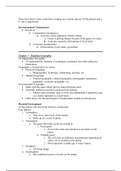Class notes
GEOG 204 Lecture Notes
- Course
- GEOG 204 (GEOG204)
- Institution
- Concordia University ( )
The document consists of notes taken from attending Professor John Buskard's lectures and it includes the most important parts of the material.
[Show more]



